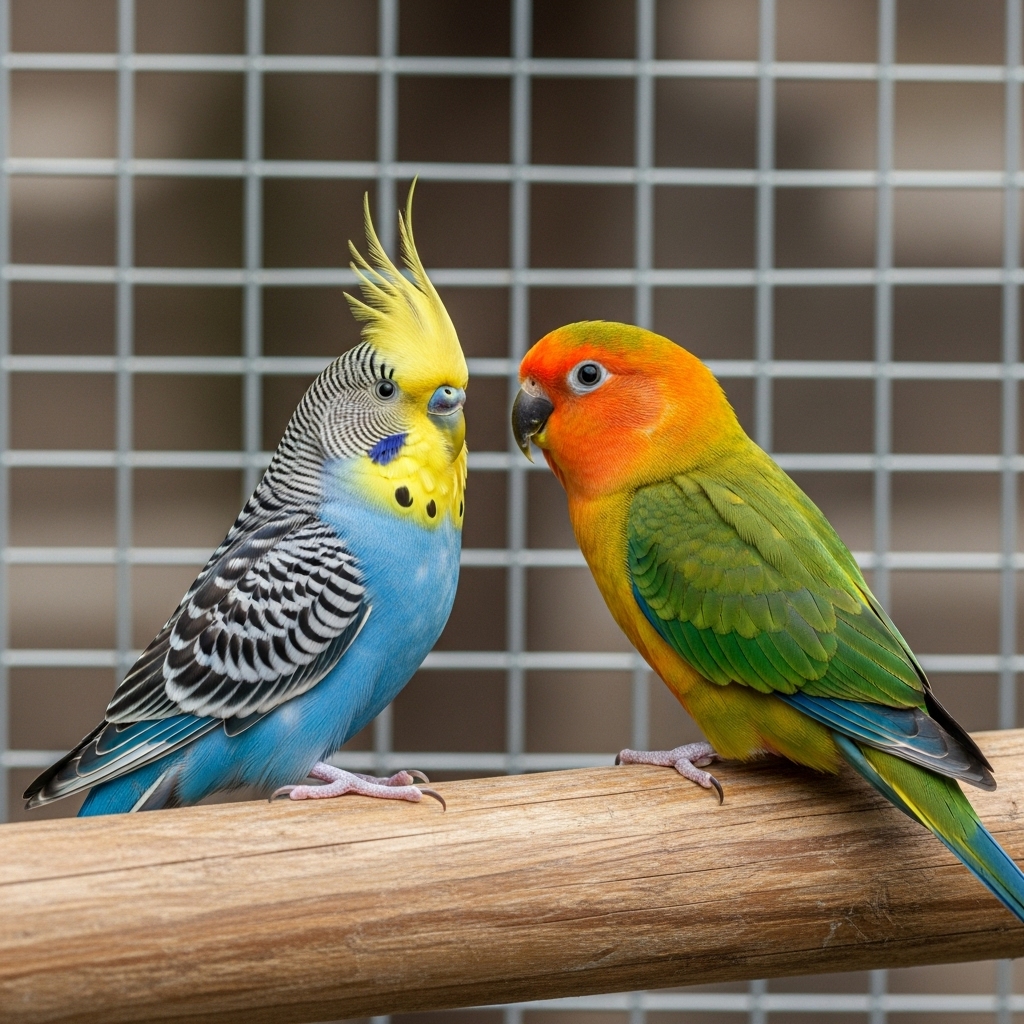Bird Age Calculator
How This Calculator Works
Step 1: Choose Species
Select your parrot's species from the list.
Step 2: Enter Age
Input your parrot’s age in years or months.
Step 3: Get Results
See the age in human years and its life stage.
This tool helps you relate your parrot's age to human life stages, making it easier to understand their development and care needs.
Average Lifespan of Birds
| Bird Specie | Average Lifespan (Years) | Category |
|---|---|---|
| Budgerigar (Budgie) | 5–12 | Parakeet |
| Cockatiel | 15–25 | Parrot |
| Lovebird (Peach-faced) | 10–20 | Parrot |
| Pacific Parrotlet | 15–20 | Parrot |
| Green-cheeked Conure | 15–25 | Conure |
| Sun Conure | 15–25 | Conure |
| Lineolated Parakeet | 10–15 | Parakeet |
| Bourke’s Parakeet | 10–15 | Parakeet |
| English Budgie | 8–12 | Parakeet |
| Zebra Finch | 4–8 | Finch |
| Society Finch | 5–10 | Finch |
| Gouldian Finch | 5–8 | Finch |
| Canary | 8–15 | Songbird |
| American Goldfinch | 5–10 | Finch |
| Red Factor Canary | 10–15 | Songbird |
| Gloster Canary | 10–12 | Songbird |
| Blue-crowned Conure | 20–25 | Conure |
| Crimson-bellied Conure | 15–20 | Conure |
| White-winged Parakeet | 10–15 | Parakeet |
| Black-cheeked Lovebird | 10–15 | Parrot |
| Fischer’s Lovebird | 10–20 | Parrot |
| Masked Lovebird | 10–15 | Parrot |
| Rosey Bourke Parakeet | 10–15 | Parakeet |
| Scarlet-chested Parakeet | 10–15 | Parakeet |
| Plum-headed Parakeet | 15–20 | Parakeet |
| Indian Ringneck Parakeet | 20–30 | Parakeet |
| Meyer’s Parrot | 20–25 | Parrot |
| Senegal Parrot | 25–30 | Parrot |
Parrot Age Calculator in Human Years
The Parrot Age Calculator is a simple tool that shows your parrot’s age in human years.
Just choose the species, enter the age, and you’ll see how old your bird would be if it were a person.
This makes it easier to understand your parrot’s life stage whether it’s young, adult, or senior.
It’s quick, clear, and helpful for every parrot owner who wants to take better care of their feathered friend.

Care tips for birds stages
Juvenile (Young Bird)
- Handling: Short, daily handling sessions to teach step-up and gentle manners.
- Diet: High-quality pellets as the base, fresh veggies daily. Seeds and nuts should only be small treats.
- Sleep: Ensure 10–12 hours of uninterrupted sleep in a dark, quiet room.
- Socialization: Slowly introduce new sounds, different rooms, and new people to build confidence.
- Enrichment: Offer a variety of safe chew and foraging toys, rotating them weekly to keep things interesting.
- Health: Schedule a first vet check-up, monitor weight weekly, and always provide fresh, clean water.
Adult
- Routine: Maintain a consistent daily routine for feeding, training, and sleep (10–12 hours).
- Diet: A mix of 60–70% pellets and fresh vegetables. Use seeds and nuts as high-value rewards for training.
- Exercise: Aim for 1–2 hours of supervised out-of-cage time daily for flight, climbing, and play.
- Enrichment: Challenge your bird with foraging puzzles and change cage toys frequently to prevent boredom.
- Hygiene: Offer a mist or bath 2–3 times a week. Regularly clean the cage, perches, and toys.
- Vet Care: A full check-up once a year is essential. Continue tracking weight weekly or bi-weekly.
Senior
- Vet Care: Increase vet visits to twice a year and ask for basic bloodwork to monitor health.
- Diet: Adjust to a lower-fat diet with more veggies. Soften foods (soaked pellets, warm grains) if chewing is hard.
- Comfort: Provide wider, softer perches and easy-to-climb ladders. A night-light can help prevent night frights and falls.
- Exercise: Encourage gentle, shorter exercise sessions daily to maintain joint health and mobility.
- Environment: Keep their space at a stable temperature, free from drafts, and ensure extra quiet time for rest.
- Monitor Closely: Watch for any changes in weight, breathing, balance, or activity levels. Contact your vet immediately if you see these signs.
faq
It’s a tool that shows you your bird’s age in human years. This helps you understand your pet’s growth and life stage in a way that’s easy to relate to.
You enter your bird’s species and age, and the calculator compares it to the average lifespan of that species to give you an approximate human age.
No, it’s an estimate. Birds age differently depending on health, diet, and care. The calculator is a guide, not a medical tool.
It’s complex because different species have vastly different lifespans and maturation rates. A small finch might be a senior at 5 years old, while a large macaw is still considered young. This calculator uses a non-linear formula to better approximate these differences, but it’s still a simplification.
- Juvenile: A young bird that is not yet sexually mature. This period has the most rapid growth.
- Adult: The bird has reached maturity and is in its prime years for health and activity.
- Senior: The bird is in the last third of its expected lifespan. It may slow down and require different care.


